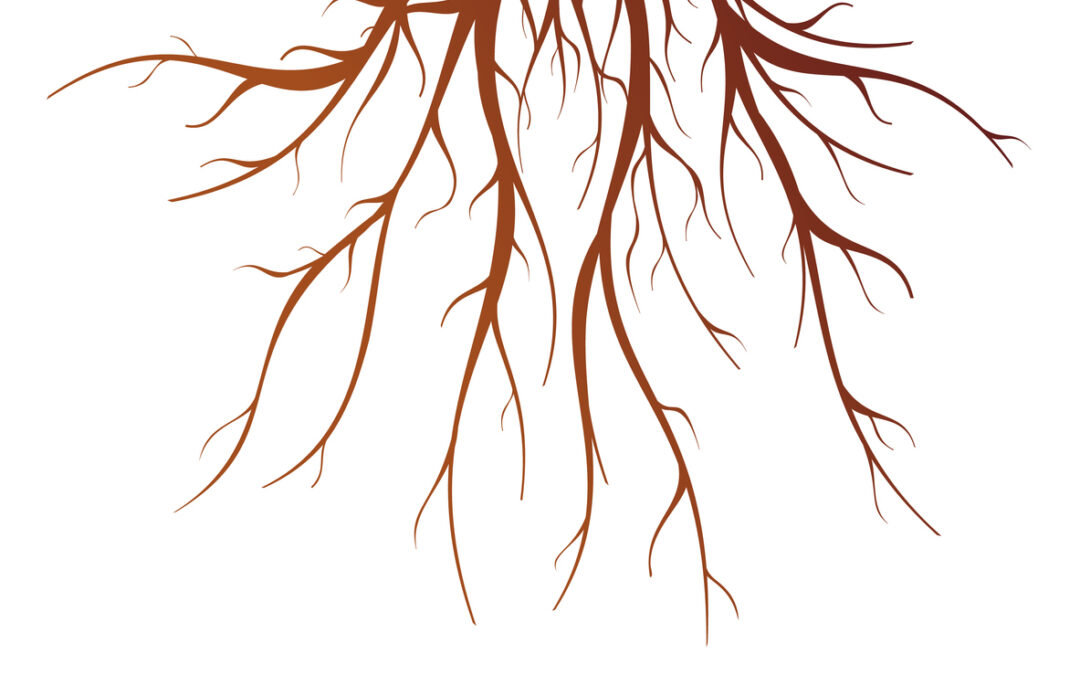
by Jen Owen, N.P. | Sep 30, 2020 | Mind-Body Medicine
My Dad was literally a jack of all trades. In fact, we used to tease that DAD stood for “Do-it-All-David”. One of his skills was electricity. When I was a little girl, I was on the other end of wiring more times than I want to remember. For those of you who don’t know, all those light switches are attached to wires that were guided through small holes in the walls and attic spaces of your house. It’s not an easy or particularly fun process. Sorry…I digress.
Anyway. When electricity is added to a house, the MOST important part is the GROUNDING wire. The purpose of a ground wire is to give excess electrical charges a safe place to go. In a properly grounded electrical system, that excess electricity goes directly into the ground. If home electricity is not properly grounded, the excess electricity can spark a fire or surge backward and harm your electronic devices and appliances.
You can think of your own body energy system in the same way. When you’re running around in your head all the time, you become ungrounded. you become reactive to what’s happening around you, rather than being able to roll with things. Sparks start to fly like anger, frustration, and annoyance. If you’re not grounded, there’s no place for those energies to go except up and out, or they stir inside of you causing you to feel exhausted and “burned out”.
Make sense?
Getting grounded isn’t hard to do.
Here’s how:
If you can be outside it’s even better, but anywhere will do.
- Stand or sit with your feet solidly on the ground (floor)
- Pretend you have roots like a giant tree coming out of your legs and feet
- See them large at the top and spindling smaller and going down deep into the ground
- Stand or sit and feel how it feels to be connected to the ground below you
- If you’re feeling any “sparks” at the moment, you can send them down those roots and ground them.
I recommend doing a grounding exercise every morning before you start your day and any time during the day when you’re feeling “off”.
Try it for a few days and let me know how it goes. Post your comments below and be sure to share this article. If the whole world was more grounded, I think things we feel a whole lot differently, don’t you?
Want to ground with me? Join my monthly Restore & Revitalize Women’s Circle every 2nd Saturday at The Flourish Center. Learn more and sign-up on our Events page.

by Jen Owen, N.P. | Sep 30, 2020 | Integrative Medicine, Mind-Body Medicine
Are you feeling strained and drained? Those are the best words I can find to describe what I sometimes feel myself, and also see in my patients.
We’ve had so much to deal with these past few years.
How are you coping? How are you keeping away the strain and drain?
There are three specific effects of strain and drain I often see: foggy thinking, trouble sleeping, and feeling tired. This makes a lot of sense.
Most of us are running around in fight-or-flight. If you don’t know what I’m talking about, start here. This causes elevations in the stress hormone cortisol. Short-term elevation of cortisol affects our sleep and our energy, and long-term elevation of cortisol can actually reduce the number of brain cells and/or stop new brain cells from being made.
The best way to handle this is to do everything we can to keep cortisol levels down. This can be done in several ways. You can do deep breathing and meditation. You can add an adaptogen herb as I discuss in this article. And, here are some specific tips for each of the three main areas of strain and drain.
The 3 Effects of Strain & Drain:
#1: Trouble Sleeping
As you can imagine, all the extra cortisol is affecting our sleep. My patients are describing fitful sleep and waking up for no reason and not being able to fall back asleep.
If this is you, too, it’s more important than ever to practice sleep hygiene. This means getting off of technology at least an hour before you want to be asleep, making sure your room is as dark as possible, maybe taking a warm bath or long shower before bed, and considering a nice cup of relaxing tea.
We have to allow the body time to let the cortisol levels reduce. If we go to bed when they’re still high, we won’t be able to fall asleep or stay asleep.
So, just like Peter Rabbit’s mother, why not try a nice warm cup of chamomile tea?
Science has yet to definitively prove that chamomile actually does something in the body that induces sleep, yet herbalists have been using the herb for centuries for this very purpose.
With very few side effects, it’s worth a try.
Add 1 T. dried flowers per cup of water, cover, and let it steep 20-30 minutes. Then strain and enjoy.
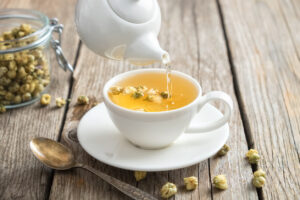
#2: Feeling Tired
If we’re feeling more stressed in general and not sleeping, it makes sense that we’d be feeling tired during the day.
One way to get more energy is through B-vitamins. B vitamins help you convert your food into energy. Without a proper amount, we can feel low in energy.
I always recommend more mindful eating of vitamins first and add a supplement only if needed. Foods high in B-vitamins include whole grains, nuts/seeds, dark green leafy greens, meat, poultry, seafood, and eggs.
If you need more support, you can visit a health food store like New Seasons and purchase a Vitamin B-Complex. Some people have genetic issues which make it difficult to properly assimilate B-vitamins, so taking large amounts could cause anxiousness. Be sure to come and see me or another expert for advice on which supplement would be best for you.
#3: Brain Fog
The last effect of these times I’m seeing frequently is brain fog. This can be helped with all the above, as well. Here’s another fun tip… rosemary.
Rosemary has gotten a decent amount of press for its effect on memory. Small studies have proven that when people smell the oil, they remember things better. Interesting.
What I find with rosemary is that is makes me think better in general. It’s like a mini mental stimulant. You can use the essential oil and smell it as you start to feel foggy or you can simply use the plant. It grows everywhere here in Portland. Simply cut a small sprig and keep it near you. When the brain fog hits, rub your fingers along the leaves and smell. It’s that simple.
Here’s some rosemary oil I have brewing right now. I’ll use it on food and to rub it on my skin on days when I need a little boost.


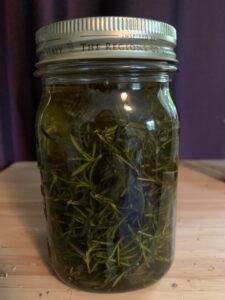
It’s often the simple things that seem to make a big difference. Slow down and stay in your body. Try not to let you mind run wild all the time. This doesn’t support healthy cortisol levels and can cause all the effects we’ve discussed.
I’d love to hear from you. How are you handling the strain and drain? Is there anything else I can do to support you?

by Jen Owen, N.P. | Sep 24, 2020 | Seasonal Health
I love fall. It’s the time when we get to start turning inward. I always find it interesting how that seems to just naturally happen.
It’s a great time for reflecting on the life you’re living and for asking if it’s feeling right to you.
Sometimes we have to make some hard choices about our lives that don’t necessarily align with those around us.
Do you eat what you eat because it’s what others in your family want to eat?
Do you drink alcohol because it’s how you share special time with your loved ones, but you don’t really want it?
Do you skip your exercise regimen in order to do what someone else wants to do?
Do you stay in a job because of “security” or because you “have to”?
How often do you do want YOU really want to do?
I know it’s even harder in times like these. If you have kids, you have kids ALL the time. If you drink alcohol, the culture says to drink more. If you had an exercise plan, it’s been disrupted.
You get the idea.
Now, more than ever, we need to get clear about what we really want, and then allow it for ourselves.
Take some time and ask yourself:
~Am I eating how I want to eat?
~Am I spending my time how I want to spend it (besides homeschooling—sorry Moms!)
~Am I prioritizing my care of my own body?
~And…what else?
It’s okay to want what we want. It’s okay to set some priorities and then stick with them.
What more is possible for you?
Will you let yourself make it known and let yourself have it?
I’d love to hear what comes up for you.
Post your comments below and if you’re feeling really stuck, come on in and let’s get a plan formed together! I’ll help you find what’s already there.
Need more fall health tips? Check out this blog, too!
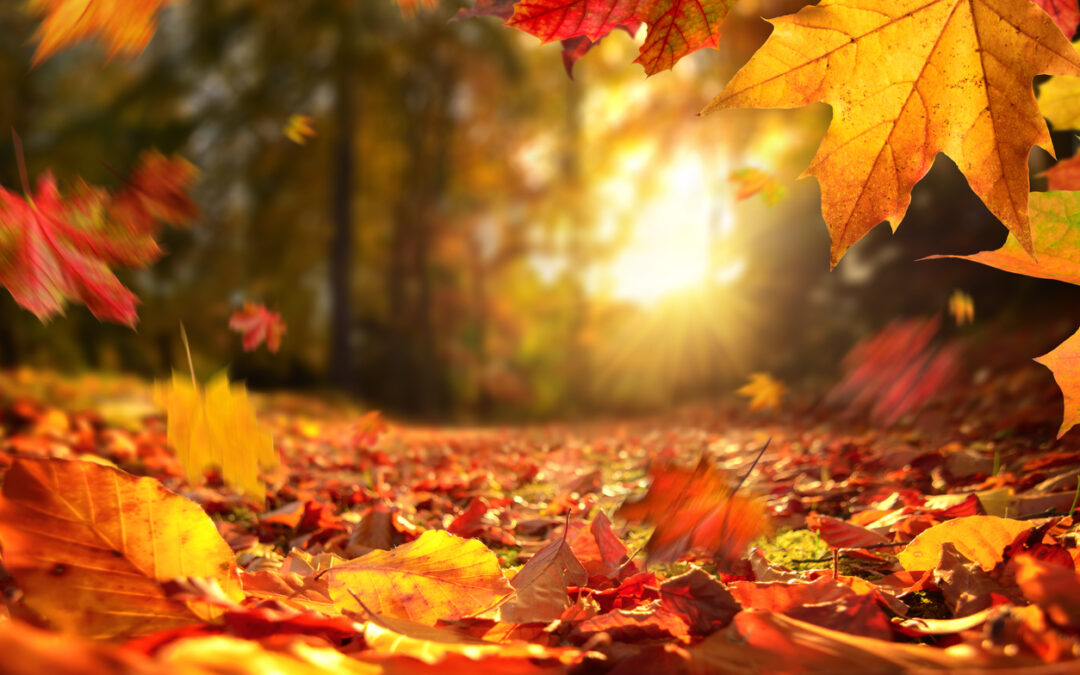
by Jen Owen, N.P. | Sep 23, 2020 | Seasonal Health
Written by Flourish founder and clinic Nurse Practitioner, Jen Owen, N.P.
Fall is here! The leaves are starting to fall, the rain will soon be upon us, and all things pumpkin will be showing up everywhere.
The changing of the season brings new cycles in weather and also in our health.
In Chinese Medicine, fall is the season of the element metal, which is associated with the lungs and large intestine.
“The lungs and the large intestine are both organs that must stay clean for their best function, and often have difficulty when they are contaminated by environmental pollutants of cities, by smoking habits, and by the dietary excesses common to the American culture”, Elson Haas in his book, Staying Health With the Seasons (one of my favorite books—available used at Powell’s).
Now is the perfect time to pay attention to what we’re breathing and what we’re eating, and how we’re caring for our lungs and large intestine.
For the Lungs:
~Deep breathing, like 4:7:8 Breathing, a simple breathing technique where you inhale for 4 counts, hold for 7 counts, and breathe out for 8 counts, then repeat 4 times. Click here to learn more.
~Get fresh air. How much fresh air are you getting every week? Try to get outside at least 30 minutes every day.
~Drink mullein infusion: Mullein leaves are tonifying to the lungs. Pour boiling water over mullein leaves, cover, and let steep for at least 30 minutes. Strain and enjoy. (Use 1 tsp. dried herb/1 cup water)
For the Large Intestine:
~Make sure you’re having a bowel movement at least daily. If you’re not, first check in with your water intake. Dehydration is one of the most common causes of constipation. Next, what about fiber? The Rainbow Diet is an easy way to add more fiber in the form of colorful fruits and vegetables.
~Pay attention to what Mr. Haas calls, “congesting foods”, like meats, dairy, refined foods, and foods high in sugar. These foods can slow movement in the large intestine and keep you from detoxifying properly.
~Keep your microbiome (good bacteria balance) happy. Eat some foods that contain good bacteria like kombucha and sauerkraut.
~Consider a Comprehensive Stool Analysis. We have two different options at Flourish for this testing, which lets us know how well you are digesting your foods, the balance of the good and bad bacteria in your gut, if there’s any inflammation present, if you have an increased risk of colon cancer, and more.
As far as seasonal eating, it’s pretty obvious, eat what’s in season.
It’s the harvest, so tomatoes, peppers, squashes, and fresh herbs abound. If you can shop the farmer’s market, it will be obvious what’s fresh and available. I love to throw everything together into soups and stews.
What’s your body wanting right now? Can you slow down and listen?
The last piece of moving into fall has to do with living our best way of way of living. It’s about allowing yourself to do what feels best to you and be the person you most want to be.
If life isn’t going the way you wish it was, if you feel like one area of your life gets good just as issues occur in another, and you’re looking for ongoing support to live your very best life, schedule an appointment with me now.
Fall is the time when the dark returns and we get to start turning more inward. Take a moment to ask what you need at this time.
Let your breath and your food move through you with ease and use these tips if any stagnation occurs.
Questions, comments? I’d love to hear from you. Please comment below and please share this blog with your friends.
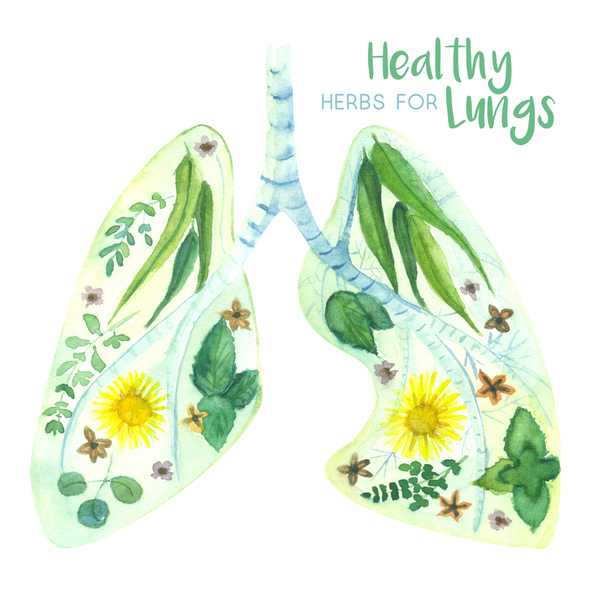
by Jen Owen, N.P. | Sep 18, 2020 | Integrative Medicine
It looks like we’re finally starting to feel some relief from the oppressive smog that’s been hovering over Portland the past 9 days. We’ve almost made it through and now it’s time to take care of our lungs.
Today I’m going to discuss my favorite lung herbs starting with my two favorites, mullein and coltsfoot.
Mullein leaf (Verbascum thapsus)
Mullein has a strong affinity for the lungs. It’s a normalizer for the lungs as well as a demulcent (soothes and relieves irritable mucus membranes). It’s used for all conditions associated with inflammation in the respiratory tract.
Mullein is very common in the United States. For lung health, we use the leaves as an herbal infusion (like a tea).
Note: If you’re not sure how to make a herbal infusion, check out this live video on the FLOURISH Facebook page to learn how.
Coltsfoot leaf (Tussilago farfara)
Coltsfoot also has an affinity for the lungs. It acts as a gentle expectorant (loosens and promotes the gentle flow of mucus), as well as also being a demulcent. It’s great for dry coughs, shortness of breath, hoarseness, and bronchitis.
Coltsfoot is also easy to find and is prepared as an infusion.
*The combination of mullein and coltsfoot is an old standby in herbal medicine and quite effective.
Consider taking 1 quart of this combination as an infusion for the next two weeks.
Be advised: While mullein has no contraindications, coltsfoot is not for use in pregnancy or breastfeeding or by anyone with known liver disease. Coltsfoot should be used only for a short time due to the presence of pyrrolizidine alkaloids (PA’s), which may harm the liver with long- term use.
Other lung herb choices:
Licorice root (Glycyrrhiza glabra):
Licorice is a relaxing expectorant (brings up the mucus without causing drastic coughing) for unproductive coughs with dry throat and for all irritable lung conditions.
Licorice root is also very common and easy to find. The root is used as a decoction (simmered in water for 30 minutes).
Licorice should also not be used during pregnancy and only under professional supervision if you have diabetes or high blood pressure.
Marshmallow root (Althea officinalis)
Marshmallow is a soothing demulcent. It’s helpful for any irritation of mucus membranes, dry cough, and bronchitis.
The best way to make it is to put the chopped root into cold water and let it set for several hours. It will be gooey, so you can add it to other teas once it’s infused if that makes it more palatable.
The only thing to watch for with marshmallow root is that it can block absorption of other medications and supplements, so don’t take it at the same time as your other remedies.
Thyme leaf (Thymus vulgaris)
Thyme is known for its ability to fight all infections, including viral, bacterial, and fungal, and has an affinity for the respiratory tract. If irritation from the smoke has morphed into a possible infection, thyme can be helpful.
Thyme is best taken as an infusion.
It is not recommended for pregnancy and should not be taken for long-term use.
If you’re my patient, you can contact me to get any of these herbs. If you’re in Portland, you can support local business by getting your herbs from Dragon Herbarium or Herb Stomp. It looks like they both have these herbs in stock. And, I always love to order online from Mountain Rose Herbs.
Here’s a live video on the FLOURISH Facebook page if you’d like to do some breathing with me.
As always per our terms of use, this blog is not meant to serve as medical advice and you should always consult your own healthcare provider for personal advice.
Any questions? Please comment below.








Recent Comments